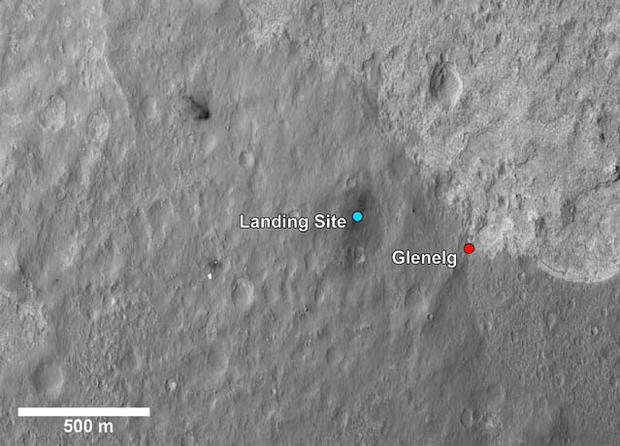Mars rover Curiosity's first trip still weeks away
(CBS News) Mars rover Curiosity is still undergoing extensive equipment tests to make sure the 1-ton science lab is ready to begin exploring the Red Planet. In a press call with reporters, members of the Curiosity mission team discussed what comes next for the Mars rover. Long story short: don't expect the Mars rover to start roving until next month.
Speaking with reporters, project scientist John Grotzinger said that things are going so well for the Curiosity team that "folks are beginning to take some time off." The Mars rover continues to run through equipment tests, and new pieces of the hi-tech rover are coming online every day. Most recently, Curiosity activated its weather monitoring station, giving scientists their first access to long-term climate conditions on Mars since the Viking 1 Lander shut down in 1982. (For the record, the maximum temperature Curiosity has recorded so far is one degree above freezing.)
Grotzinger explained that testing - including a rotation test on the rover's wheels - will continue until "sometime next week" after which the mission team will enter what he calls "intermission." Once all equipment has been determined to be operational, Curiosity and the team will transition to exploration.
Glenelg
The first mid-term target for Curiosity is an intriguing piece of Martian real estate the mission team has dubbed "Glenelg." The location was chosen because it is an area where three different kinds of Martian terrain meet. Glenelg will be the first test of Curiosity's drilling instruments. Grotzinger estimates the trip from the landing zone to Glenelg will take "three to four weeks" but emphasized that the team may make several stops along the way if Curiosity spots anything interesting in the Martian soil.
"I'm sort of guessing a timescale of a month, a month and a half, we make it to Glenelg." Grotzinger said. He also mentioned that the unusual name - also the name of an ancient rock formation in Canada - came from a list of over 100 names contributed by the science team.
Long term: Mount Sharp
The big long-term target for Curiosity is the mammoth Mount Sharp. At the base of the mountain are several hills which orbital cameras have identified as having once had water.
"There should be hydrated minerals in all those layers," Grotzinger said when describing the varied terrain at the base of Mount Sharp. "There's a rich diversity there."
But Mount Sharp will have to wait for now. With all the tests Curiosity has on its to-do list, it is unlikely the rover even begins the trip to the mountain before the end of the year.


